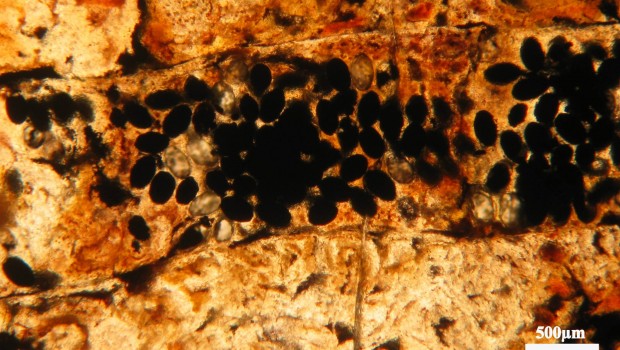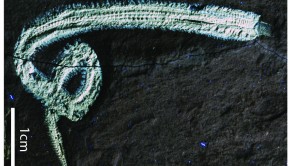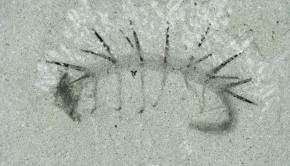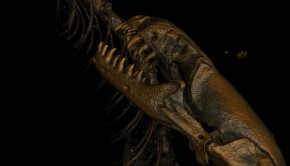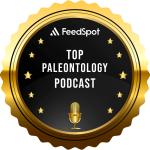A Piece of Earth History in my intestine?
New Study: Constraining the Deep Origin of Parasitic Flatworms and Host-Interactions with Fossil Evidence
Many humans or their pets have already been infested by parasitic flatworms. These parasites usually use vertebrates as their final hosts, while those with complex life cycles often use invertebrates such as mollusks or arthropods as intermediate hosts. An international team under the supervision of Kenneth de Baets summarized the fossil record of parasitic flatworms and its coincidence with the evolution of their hosts. As in humans, stool samples of now extinct hosts (coprolites) can be used to document the presence of parasitic flatworms. Permian shark coprolites (about 259 Ma) previously described by Dentzien-Dias currently still harbour the oldest confident evidence for parasitic flatworms with complex life cycles. Further coprolites have become described by Poinar and Boucot (2006) which might indicate that terrestrial forms like dinosaurs or crocodylians were already infested by in the Cretaceous (about 126 Ma). Over 75 remains of attachment organs in primitive Middle Devonian fishes (about 382 Ma) are probably the oldest evidence for helminths (Upeniece 2001). These probably belong to parasitic flatworms with simple life cycles, although some might belong to (Cestoda) or Acanthocephala. Shell structures induced by parasitic flatworms in their bivalves intermediate hosts (e.g., igloo-shaped concretions, pits) can also be evidenced in the fossil record. Today’s host associations speak even for an earlier origin of parasitic flatworms in the Cambrian-Ordovician (about 485 Ma) where their vertebrate hosts are detected for the first time. The fossil record is consistent with long association between parasitic flatworms and their vertebrate hosts over millions of years, but it is currently still too fragmentary to quantify the direct relationship with the evolution of their hosts or environmental changes. However, the authors show how new methods, such as molecular clocks – calibrated with fossil or geological data – can be used in the future to form a more robust time frame, which in turn can be used to test such hypotheses.
Image: Thin section of a 270 million-year-old shark coprolite containing clustered parasite eggs, from Dentzien-Dias et al. 2013

